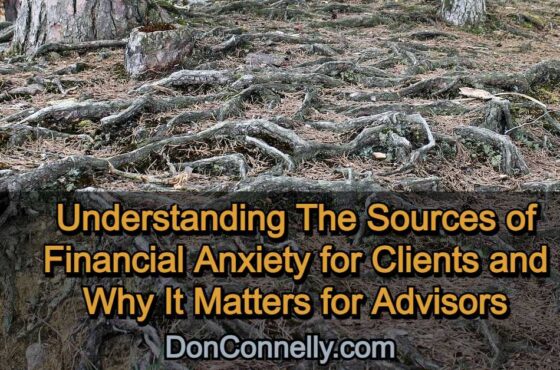How to Become Naturally Empathetic (and Build Deeper Connections with Clients)
 At a time like we are now experiencing, when clients are feeling anxious and vulnerable about the future, financial advisors’ most potent tool is empathy. They need to know you understand how they’re feeling about their circumstances and their concerns about the world around them.
At a time like we are now experiencing, when clients are feeling anxious and vulnerable about the future, financial advisors’ most potent tool is empathy. They need to know you understand how they’re feeling about their circumstances and their concerns about the world around them.
There may not even be a problem for you to solve other than to make your clients feel understood and validated for having those feelings. That’s where many financial advisors fall short because they view themselves strictly as problem solvers and not therapists. If your goal is to build enduring relationships with clients who have confidence in your advice, that needs to change.
You have no doubt heard the axiom, “Your clients don’t care about how much you know until they know how much you care.” That’s the critical premise behind empathy. When clients see you as empathetic, they feel understood, respected, and valued. Nothing can form a human connection like the genuine expression of empathy.
The challenge for financial advisors, who are analytical problem solvers at heart, is that empathy doesn’t come naturally for many. Most of us have the natural ability to show empathy in our personal lives, but it may not feel natural in our professional relationships. The good news is that demonstrating genuine empathy is a skill that can be learned if practiced.
Here are five exercises you can practice with anyone to learn how to become genuinely empathetic:
#1. Proactively listen
The key to becoming a proactive listener is to speak less. Advisors tend to talk more than they listen. You can’t gain any insight into what a person thinks or feels by talking. An empathic person listens first and doesn’t speak until they understand their clients’ thoughts or feelings. Here’s a framework to follow with everyone you meet to ensure you are proactively listening.
Give your undivided attention to what your client is saying. No looking at your cell phone or computer—just steady eye contact with your client.
Let them talk. Don’t interrupt. Give them all the time they need to finish their thoughts. You might encourage them by saying, That’s interesting. Can you tell me more…”
Play back your understanding. After they finish speaking, summarize your understanding to them and ask, “Have I understood you correctly?”
Demonstrate curiosity. Ask follow-up questions to better understand their feelings and perspectives.
#2. Give your perspective
Once the other person is finished, you can express empathy by letting them know how you would feel in the same situation. But it must be genuine. You need to put yourself in the person’s shoes and feel the experience as if it happened to you. Then let your emotions speak to it by saying, “That must feel terrible,” or “I couldn’t imagine how I would feel if that happened to me,” or something along those lines.
If you’re really listening, your emotional response will likely be similar to theirs. This will make them feel heard and understood, and more connected to you.
#3. Show your vulnerability with a story
Being vulnerable in front of another person communicates you’re human, sharing the same weaknesses, hurts, and fears as others. It’s not a sign of weakness. It actually creates a common ground and gives the other person something to connect to.
After carefully listening to your client, think of a time when you experienced a similar situation and how you felt going through it. Share it with your client, along with any lessons you took from it.
#4. Never make assumptions
When developing a financial plan or investment strategy, advisors are trained to make assumptions. This is not a time for assumptions because they are not based on a true understanding of what is happening to your client. If you make assumptions, you are demonstrating you have some preconceived notion about how your client is feeling. Never try to be empathetic until you have a deep understanding of your client’s situation.
#5. Be imaginative
Of course, it’s impossible to relate to all the experiences you hear. But you still need to demonstrate empathy if you hope to create a connection. It requires the ability to imagine how a person is feeling. For this, you need to rely on a lifetime of experiences with all the people in your life who have gone through difficult times. If you can tap into those emotions, you can have a genuine reaction to what your client is experiencing.
Practice, practice, practice
At first, practicing this framework may feel unnatural, requiring a conscious effort to go through the exercises. But that holds true when developing any new skill. The more you practice, the more natural it will feel. If you can master the skill of empathy, you master your ability to create deeper connections with your clients, leading to more enduring relationships.
Unless you learn how to forge emotional connections, people will remain unconvinced you can do anything to help them. Watch this 3-minute video to learn how our 24-step training program can help you do just that!
See program details and enroll today!
Available as a self-paced program (always open) or as a 12-week coaching program (open a few times a year), this program will change the way you view your practice!
24 video lessons. 24 exercises. 5 LIVE group coaching sessions (included only with the coaching format). And an enormous advantage over your competition. Enroll now!



